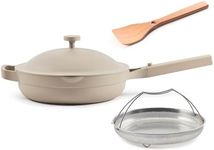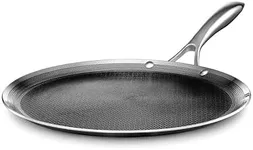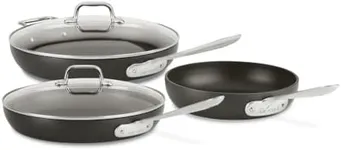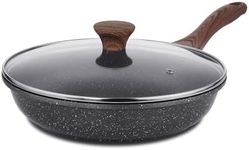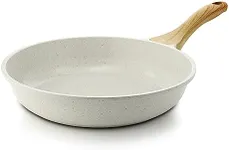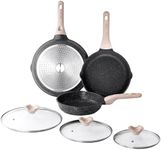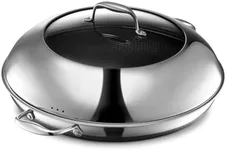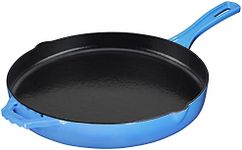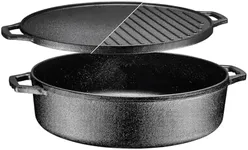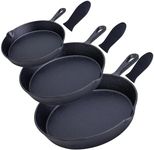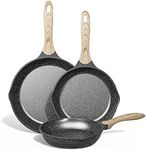Buying Guide for the Best Non Toxic Frying Pan
Choosing a non-toxic frying pan is a smart move for anyone who wants to cook safely and healthily. The main goal is to avoid pans that can release harmful chemicals into your food, especially at high temperatures. When shopping, it's important to understand the materials used, how they are coated, and how they perform in everyday cooking. By focusing on a few key features, you can find a frying pan that fits your cooking style and keeps your meals safe.MaterialThe material of a frying pan is crucial because it determines both how the pan cooks and whether it can leach unwanted substances into your food. Common non-toxic materials include stainless steel, cast iron, carbon steel, and certain types of ceramic. Stainless steel is durable and non-reactive, making it a safe choice for most foods. Cast iron and carbon steel are also safe if properly seasoned, but they require a bit more care. Ceramic pans are popular for their nonstick properties, but it's important to ensure they are free from lead and cadmium. When choosing, think about how much maintenance you're willing to do and what types of food you cook most often.
CoatingThe coating on a frying pan affects both its nonstick performance and its safety. Traditional nonstick coatings often contain chemicals like PTFE (Teflon) or PFOA, which can release toxins at high heat. For a non-toxic option, look for pans labeled as PTFE- and PFOA-free, or those with a ceramic-based coating. Ceramic coatings are generally considered safer, but they can wear out faster. If you want a pan that lasts longer and don't mind using a bit more oil, uncoated stainless steel or well-seasoned cast iron are good choices. Your cooking habits—like whether you often cook sticky foods or prefer easy cleanup—can help guide your decision.
Heat ResistanceHeat resistance refers to how much heat a pan and its coating can handle without breaking down or releasing harmful substances. Some coatings can only handle low to medium heat, while others are safe at higher temperatures. If you often sear, broil, or use your pan in the oven, make sure to check the maximum safe temperature. For most home cooks, a pan that can handle at least 400°F (200°C) is a good benchmark. Think about your typical recipes and whether you need a pan that can go from stovetop to oven.
Ease of CleaningHow easy a pan is to clean can affect how often you use it and how long it lasts. Some non-toxic pans, like those with ceramic coatings, are easy to wipe clean but can be damaged by abrasive sponges. Stainless steel and cast iron may require more effort, especially if food sticks, but they can be scrubbed without worry. If you want a low-maintenance option, look for pans that are dishwasher safe and have a reputation for easy release. Consider your willingness to hand-wash and how much time you want to spend on cleanup.
Weight and Handle ComfortThe weight of a frying pan and the comfort of its handle can make a big difference in everyday use. Heavier pans like cast iron retain heat well but can be hard to maneuver, especially when full. Lighter pans are easier to handle but may not cook as evenly. The handle should feel sturdy and stay cool during cooking. If you have wrist or hand issues, or if you often move your pan from stove to oven, a lighter pan with an ergonomic handle might be best. Try to imagine how you'll use the pan most often to find the right balance.

